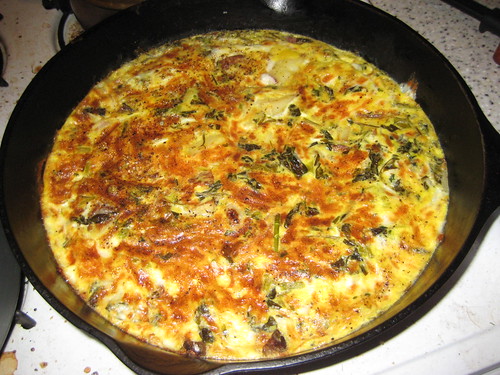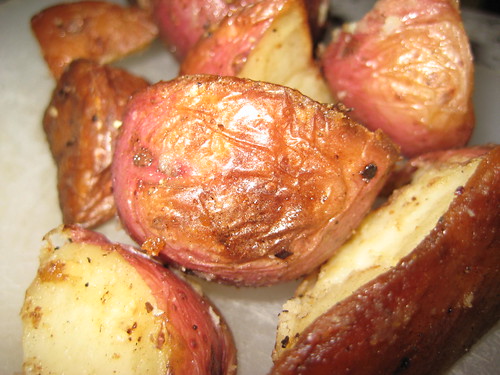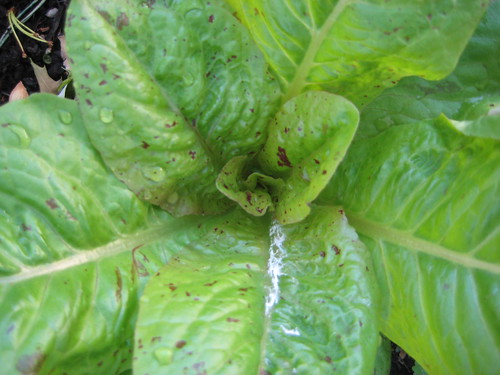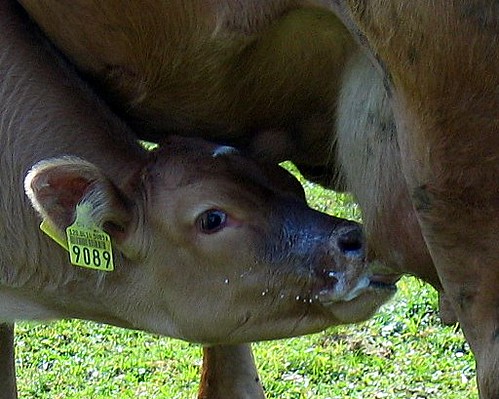a few thoughts on the cookie dough recall
P.S. The voluntary recall includes 43 varieties of cookie dough sold by Nestle. You can access nutritional information about each of them at Nestle's wonderful cookie dough site: http://www.verybestbaking.com/. Don't event get me started on the ridiculousness of that name. Very best indeed. It is a national story, but I read about the recent Nestle cookie dough recall as a local article in the St. Paul Pioneer Press. Six Minnesotans, between 2 and 18 years of age, became quite ill from eating raw dough. This is disturbing on many levels, and it seems food recalls are simply part of "what happens." Is anyone outraged? At some point people do eat at their own risk, but as a society we can surely do more to prevent the spread of tainted food. I imagine that warnings printed on labels often do little to prevent people from eating certain foods raw, and despite manufacturers' and public health officials' official concerns, people enjoy eating cookie dough. They also enjoy runny eggs, rare steaks, and bloody hamburgers. Even steak tartare has enjoyed a renaissance as of late. If sourced and handled appropriately, many allegedly dangerous foods can be safely enjoyed in a raw or lightly cooked state. Mass-produced, industrial tubs of dough do not belong on this list, but their existence influences how people, including public officials, view the honest, homemade variety.
It is a national story, but I read about the recent Nestle cookie dough recall as a local article in the St. Paul Pioneer Press. Six Minnesotans, between 2 and 18 years of age, became quite ill from eating raw dough. This is disturbing on many levels, and it seems food recalls are simply part of "what happens." Is anyone outraged? At some point people do eat at their own risk, but as a society we can surely do more to prevent the spread of tainted food. I imagine that warnings printed on labels often do little to prevent people from eating certain foods raw, and despite manufacturers' and public health officials' official concerns, people enjoy eating cookie dough. They also enjoy runny eggs, rare steaks, and bloody hamburgers. Even steak tartare has enjoyed a renaissance as of late. If sourced and handled appropriately, many allegedly dangerous foods can be safely enjoyed in a raw or lightly cooked state. Mass-produced, industrial tubs of dough do not belong on this list, but their existence influences how people, including public officials, view the honest, homemade variety.
It begs the question: how could there be such a huge market for manufactured cookie dough? Please tell me. The concept is absurd, but an insipidly clever marketing idea. Busy people, who apparently don't have enough time to measure more than four ingredients, can purchase this dough-like substance, press or cut it into shapes, and convince themselves that they are, in fact, baking. It's akin to serving microwave bacon. I have tears in my eyes.
Real cookie dough is a wonderful thing. The alchemical marriage of flour, butter, sugar, and chocolate chips is truly potent, an ethereal mix to be honored in its own right. Freshly baked chocolate chip cookies are wantonly desired by children and adults across this great country, and they are one of the few truly notable American foodstuffs. We don't have many. Must we desecrate them through food engineering and negligent mass production?
We have all heard the warnings. Do not eat raw eggs. Do not eat cookie dough, because it contains raw eggs. When was the last time you heard of someone dying from a raw egg that contained e. coli bacteria? I encourage you to read the Wikipedia entry for this bacterium, as it appears poop is the typical culprit. Yes, poop. Salmonella is most often the bacterium associated with raw eggs, so it is unclear how e. coli made its way into Nestle's cookie dough, but we could take a wild guess. Public health experts and Nestlé officials: please post a comment. I also recommend reading this article from the Today Show, which describes how e. coli is most often found in raw meat or unwashed fruits and vegetables.
What bothers me the most is the MN Dept of Public Health's first quote in the aforementioned article:
Health officials warned that eating any kind of raw dough creates potential for illness. "Cookie dough, whether purchased in a tub from the store or made at home from scratch, should not be eaten raw," said Carlota Medus, a foodborne-illness epidemiologist with the Minnesota Department of Health.
Rather than push Nestle to explain how such contaminants could enter their supply chain, our public servants simply cover Nestle's ass by implying that consumers may have brought this upon themselves by eating raw cookie dough. What a joke. If you care to make your own cookie dough, from the best ingredients you can find (organic butter, organic sugar, organic eggs, and chocolate chips), and store them properly, it seems the risk of contamination is very low, perhaps even nonexistent. Maybe I'm missing something here, but my family regularly eats sunny-side-up eggs, and spoonfulls of raw cookie dough. We have never been ill. My pregnant wife eats these things.
The warnings exist to cover the lowest common denominator, the lowest quality (but cheapest!) ingredients one could possibly procure from a discount, big box grocer. But even then it's probably a low risk. Only when our dough is manufactured on a massive scale, by assembly line workers with bad habits, is there such a risk. If your grandma doesn't wash her hands, your family may get ill. If the "dough mixing technician" at the Nestle plant doesn't wash his hands, an entire city may puke its guts out, literally.
I'll leave you with the list of ingredients for one of the recalled products: "Ultimates Peanut Butter Cups, Chips & Chocolate Chunks bar." I've highlighted the nasty/processed/synthetic ingredients in red, if e. coli isn't enought to stop you. Bon appetit!
INGREDIENTS: BLEACHED ENRICHED FLOUR (WHEAT FLOUR, NIACIN, REDUCED IRON, THIAMIN MONONITRATE, RIBOFLAVIN, FOLIC ACID), SUGAR, MARGARINE (PALM OIL, WATER, SUNFLOWER OIL, HYDROGENATED COTTONSEED OIL, SALT, VEGETABLE MONO- AND DIGLYCERIDES, SOY LECITHIN, SODIUM BENZOATE, CITRIC ACID, NATURAL AND ARTIFICIAL FLAVOR, BETA CAROTENE COLOR, VITAMIN A PALMITATE ADDED), NESTLE SEMI-SWEET CHOCOLATE CHUNKS (SEMI-SWEET CHOCOLATE [SUGAR, CHOCOLATE, COCOA BUTTER, MILKFAT, SOY LECITHIN, VANILLIN - AN ARTIFICIAL FLAVOR, NATURAL FLAV0R]), PEANUT BUTTER FLAVORED MORSELS (SUGAR, PALM KERNEL OIL, PEANUTS, PEANUT FLOUR, LACTOSE, WHEY [FROM MILK], MILKFAT, NONFAT MILK, SODIUM CASEINATE [FROM MILK], BUTTERMILK, HYDROGENATED PALM OIL, SALT, SOY LECITHIN, ARTIFICIAL FLAVORS), PEANUT BUTTER CUPS (SUGAR, PALM KERNEL OIL, PEANUT FLOUR, NONFAT MILK, PEANUT BUTTER [PEANUTS, SALT, PARTIALLY HYDROGENATED PALM OIL], PARTIALLY HYDROGENATED PALM OIL, SALT, COCONUT OIL, COLOR ADDED [RED 40 LAKE, YELLOW 5 LAKE AND BLUE 2 LAKE], SOY LECITHIN, TBHQ, CITRIC ACID), WATER, CORN SYRUP SOLIDS, MOLASSES, EGGS, EGG YOLKS, BAKING SODA, SALT, SODIUM ALUMINUM PHOSPHATE, VANILLA EXTRACT, VANILLIN - AN ARTIFICIAL FLAVOR






